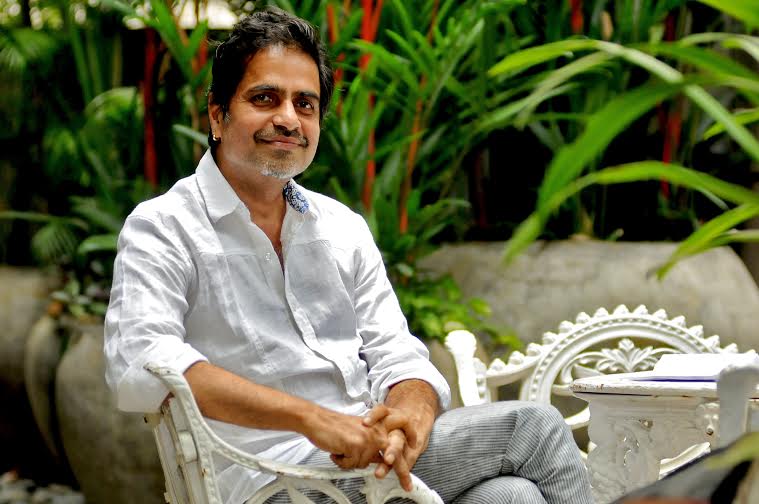NEW DELHI: The art community has long been accused of being closed but curator Sudarshan Shetty decided to broaden the canvas and opened the doors for those on the margins — of the art world and also society — to bring them into the mainstream.
Ask the contemporary Indian artist if everybody can be an artist and he says, “Yes”.
His claim is vindicated in his recent show, “Look Outside this House”, where he curates 27 artworks created by people who might not be referred to as artists in the conventional sense and includes not just installations but also songs and even a magazine.
Shetty’s artists are the likes of farmers, sex workers, Dalits, transgenders, women and people from similar communities, which have long existed on the margins. And their artworks are essentially innovations born out of their circumstances.
The show, which featured at the Serendipity Arts Festival in Goa last month and a part of which will be exhibited at the Indian Art Fair here later this month, includes a 360 degree tractor, a groundnut digger, and ink created from air pollutants.
It also features a terracotta air cooling and purification system, a magazine of, for and by sex workers, and Dalit folk songs on caste-based struggles.
The exhibition, the Mumbai-based Shetty said, is his attempt to bring forward the aspirations of those on the periphery into the mainstream, thus “dragging them through the rigid lines of gender, caste, language, race and religion that divide our world”.
“The idea is to try and answer questions like, ‘What is the function of art?’, ‘Who are you making it for?’ and ‘What is the information that you bring into it that makes it’?” the 59-year old said.
An art object is always something that relies on information out there, which as an audience you need to have an access to, Shetty said.
“The effort here is to invert that idea and say that ‘here is the object, here is the maker, this is the situation it comes from, so the information is embedded within the object itself… within the experience of the object,” Shetty, who has also curated the Kochi Muziris Biennale, told PTI recently.
While the featured works are certainly connected to the “needs of the hour”, it is interesting how they were also ostensibly rooted in “older artisanal wisdom”.
For instance, Delhi-based Ant Studio’s “Coolant Coral” borrows from the traditional practice of storing water in earthen vessels to create a cost-effective outdoor cooling solution made of terracotta cones arranged in a beehive pattern and drip irrigated to cool the air as it passes through.
Rajkot-based farmer Sanjaybhai Tilva came up with a groundnut digger that helps small scale farmers in cultivating crops like groundnuts. The low cost multi-utility farming equipment simplifies the process of harvesting such crops, which if not done properly, often results in heavy losses.
“The artworks don’t stop at being just solutions. I think they represent the kind of aspirations held by a set of people that are outside of the mainstream and also outside of the purview of mass consumption.
“It also shows that there are alternative ways of making things that would make our world only richer than how it’s going right now where there’s a complete sense of homogenisation,” Shetty said.
Another example is “Spacial Constructions of Kamathipura”, an architectural innovation that shows how sex workers in Mumbai’s brothels have devised a way to navigate business through the city’s space crunch.
The bunk beds, placed adjacent to each other and separated only by bed linen, are used by sex workers to solicit a greater number of customers at the same time, presenting it simply as a business transaction.
There’s also “Wello Water Wheels”, which highlights the need to make the lives of rural Indian women easier.
The exhibition pointed out that travelling vast distances to collect potable water possessed serious health risks.
The water wheel comes to the rescue by allowing them to not just carry double the amount of water, but also in almost half the time.
Made of durable plastic and metal, it is essentially a wheel like container that can be easily dragged from one point to another.
In Goa, three artworks were temporarily shut down because of their alleged reference to the ongoing protests over the then Citizenship Amendment Bill (which has since become an act).
“It (the show) belongs to shifting terrains constantly. People are literally, constantly working with their innovations to improve them in design, but also if you look at lot of the immaterial ideas, like the songs or even ‘Jugnu’ (the magazine by sex workers) — there is something that is shifting in terrain.
“That is not something that is to be seen as a postulation in process. I think the one thing that is very important is that this exhibition only becomes a way of bringing them forth into a space which could be considered as mainstream. This is a space dedicated to art and this festival gives them the focus that they might not have otherwise,” Shetty said. (AGENCIES)


